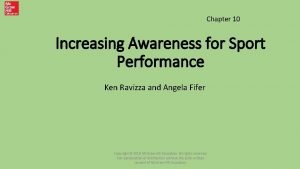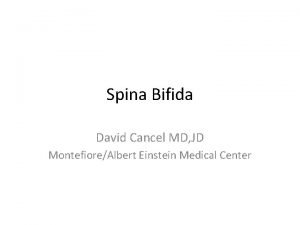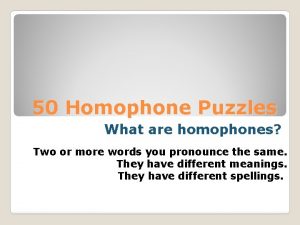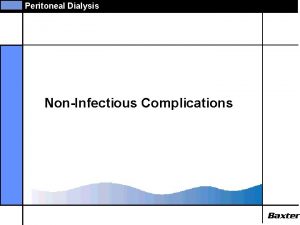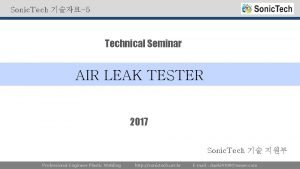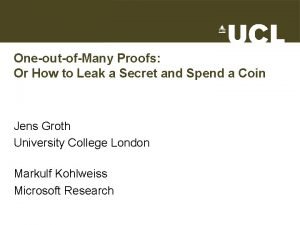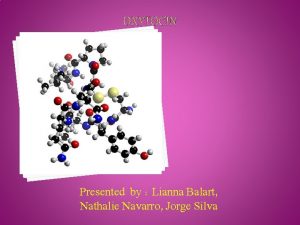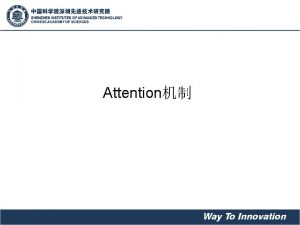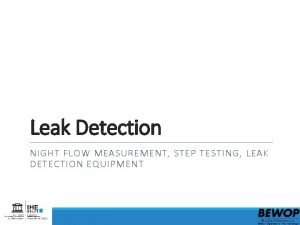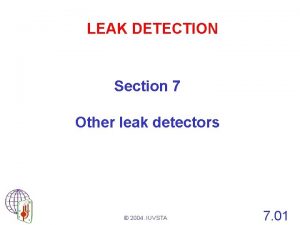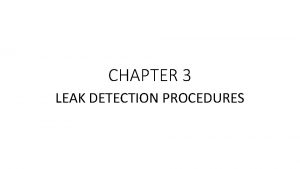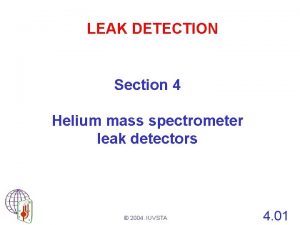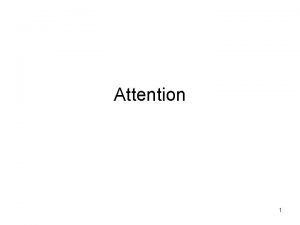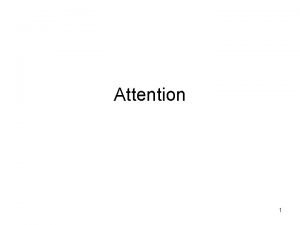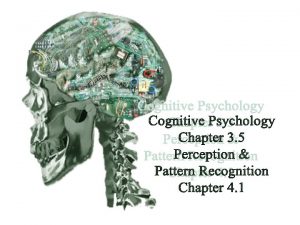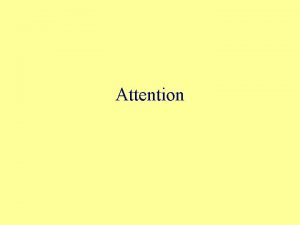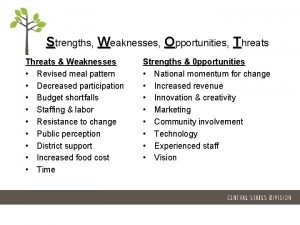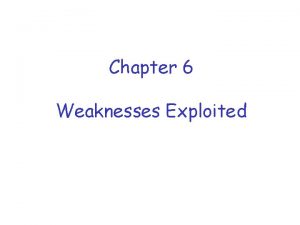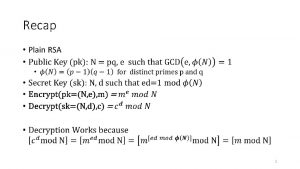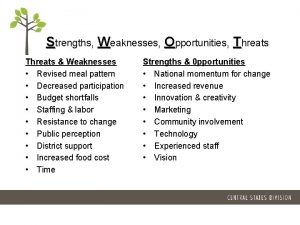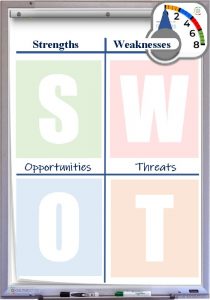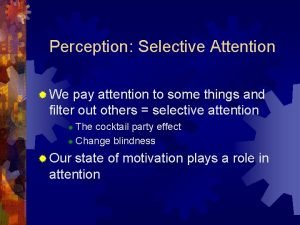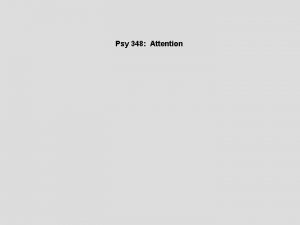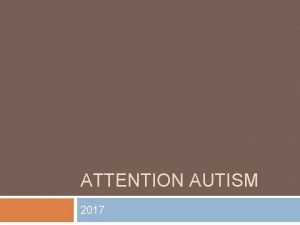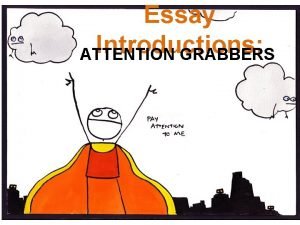Awareness of Weaknesses leak attention Awareness of Weaknesses
































- Slides: 32

Awareness of Weaknesses leak - attention

Awareness of Weaknesses (leak– attention) The captain: Attention

Awareness of Weaknesses (leak– attention) Core question ? “To what extent is the individual aware of his or her weaknesses? ”

Awareness of Weaknesses (leak– attention) Importance of awareness of weaknesses is a pre-requisite for § coping § social support § personal growth § self-acceptance

Awareness of Weaknesses (leak– attention) Too little attention for weaknesses Common causes: § lack of self-reflection § strong external focus (other people, circumstances) § defence mechanisms

Awareness of Weaknesses (leak– attention) Sailboat metaphor

Awareness of Weaknesses (leak– attention) The illusion of invulnerability people believe they are less likely than similar others: § to become ill § develop breast cancer or lung cancer § experience a heart attack § experience health problems due to environmental pollution

Awareness of Weaknesses (leak– attention) Defense mechanisms § doubting evidence § external attribution § confirmation bias § etc.

Awareness of Weaknesses (leak– attention) Motivation behind defensiveness § people are motivated to protect their self-views § information about personal weaknesses can ‘threaten’ the image that people have created about themselves

Awareness of Weaknesses (leak– attention) Motivation behind defensiveness feedback weakness negative performance evaluation ≠ self-view “I am smart” bend, distort or avoid feedback “the feedback was unfair”

Awareness of Weaknesses (leak– attention) The costs of defensiveness self-serving distortions are linked to: § narcissism § ego involvement § lower levels of self-esteem § reduced well-being

Awareness of Weaknesses (leak– attention) The costs of defensiveness § self-serving distortions not shown by people who are highly autonomous and self-determining § distorting self-information prevents the individual from learning from this information

Awareness of Weaknesses (leak– attention) Practical note If clients are expected to be open about their experiences, it is crucial to lead by example. The practitioner’s willingness to be honest about his or her feelings and experiences paves the way for clients to do the same. The ability to show vulnerability is an essential part of the trust-building process between client and practitioner.

Awareness of Weaknesses (leak– attention) Increasing awareness How would you treat clients who lack awareness of weaknesses or have difficulty acknowledging vulnerability?

Awareness of Weaknesses (leak– attention) Too much attention for weaknesses § excessive self-monitoring § depression, social anxiety, perfectionism § low levels of self-worth § loss of connection with values

Awareness of Weaknesses (leak– attention) Sailboat metaphor

Awareness of Weaknesses (leak– attention) Motivation behind excessive attention § people strive to maintain their selfimage, even if it is negative § a negative self-view promotes attention for negative self-information

Awareness of Weaknesses (leak– attention) Cameron, Stinson, Gaetz & Balchen, 2010 1. study goal presented as “compatibility between opposite-sex strangers” 2. trait self-esteem measure 3. “record a video to introduce yourself to opposite sex participant (confederate) in other room” 4. watch reply from other participant (pre-recorded - high/low acceptance) 5. report perceived acceptance from other participant

Awareness of Weaknesses (leak– attention) Cameron, Stinson, Gaetz & Balchen, 2010 low-acceptance condition responses: § minimal self-disclosure § no reference to the participant’s video-tape § expressed minimal nonverbal liking cues (e. g. , no smiling, no laughing, little eye contact)

Awareness of Weaknesses (leak– attention) Cameron, Stinson, Gaetz & Balchen, 2010 high-acceptance condition responses: § self-disclosed personal information § confederate agreed with some of the participant’s responses (e. g. , “I’m with you on this one”) § expressed strong nonverbal liking cues (e. g. , smiling, eye contact) § displayed personal interest (e. g. , “So, I hope to see you in the second part of the study!”).

Awareness of Weaknesses (leak– attention) Cameron, Stinson, Gaetz, & Balchen, 2010 § lower self-esteem individuals perceived fewer acceptance cues from interaction partners § when acceptance cues did not relate to themselves, low selfesteem individuals detect acceptance cues to the same degree as high self-esteem individuals (Study 2)

Awareness of Weaknesses (leak– attention) Practical note For clients who focus too much on their weaknesses, be sure to assess and emphasize personal strengths in treatment. This will ensure that weaknesses become embedded in a larger picture and are considered in the service of personal goals and values, rather than being the primary target of intervention. A balanced focus on both strengths and weaknesses will help these clients develop a more holistic and realistic self-view.

Awareness of Weaknesses (leak– attention) Kristin Neff ” “Just as we need to notice others’ good qualities in order to appreciate them, we need to consciously acknowledge our own positive features. However, we’re often so focused on our mistakes and flaws that we don’t even see when we get things right. ”

Awareness of Weaknesses (leak– attention) Self-appreciation In pairs, describe two things that you really appreciate about yourself. Notice what it feels like to share this with the other person.

Awareness of Weaknesses (leak– attention) Managing excessive focus How would you treat clients tend to focus excessively on personal weaknesses?

Awareness of Weaknesses (leak– attention) Balanced attention § open attitude towards incoming information on the self § unbiased processing of self-information § attention for both weaknesses and strengths § authenticity

Awareness of Weaknesses (leak– attention) Sailboat metaphor

Awareness of Weaknesses (leak– attention) The benefits of unbiased processing is positively associated with: § autonomy § life satisfaction § self-knowlegde

Awareness of Weaknesses (leak– attention) Possible mechanism strengths unconditional self -acceptance weaknesses

Awareness of Weaknesses (leak– attention) Possible mechanism narcissism strengths conditional selfacceptance weaknesses

Awareness of Weaknesses (leak– attention) Possible mechanism strengths conditional selfacceptance weaknesses low self-esteem

Thanks for your attention
 Michelle benjamin phd
Michelle benjamin phd Awareness requires totally focusing attention on the task.
Awareness requires totally focusing attention on the task. Privacy awareness and hipaa privacy training cvs answers
Privacy awareness and hipaa privacy training cvs answers Purify memory leak
Purify memory leak Leak point
Leak point Csf leak
Csf leak Chyle leak
Chyle leak Leak
Leak Sandra adamsson sex
Sandra adamsson sex Leak biliare strasberg
Leak biliare strasberg Xenon cos leak
Xenon cos leak Homophones of sixty minutes
Homophones of sixty minutes Qc of leak
Qc of leak Pericatheter leak meaning
Pericatheter leak meaning Python memory leak tools
Python memory leak tools 7 days to die memory leak
7 days to die memory leak Pearson education, inc
Pearson education, inc Bubbling in water seal chamber
Bubbling in water seal chamber Leak test 계산식
Leak test 계산식 Ashley goh leak
Ashley goh leak Variable leak valve vacuum
Variable leak valve vacuum Sgt gaedeke
Sgt gaedeke Evernote leak
Evernote leak Furmanite leak sealing uk
Furmanite leak sealing uk Leak of knowledge
Leak of knowledge Somatogravic illusion
Somatogravic illusion Secret leak detection
Secret leak detection Duke energy gas leak
Duke energy gas leak Osep leak
Osep leak Low pressure leak test
Low pressure leak test Lucy rodriguez lactating
Lucy rodriguez lactating Schwan's pizza plant
Schwan's pizza plant Pump leak model
Pump leak model

